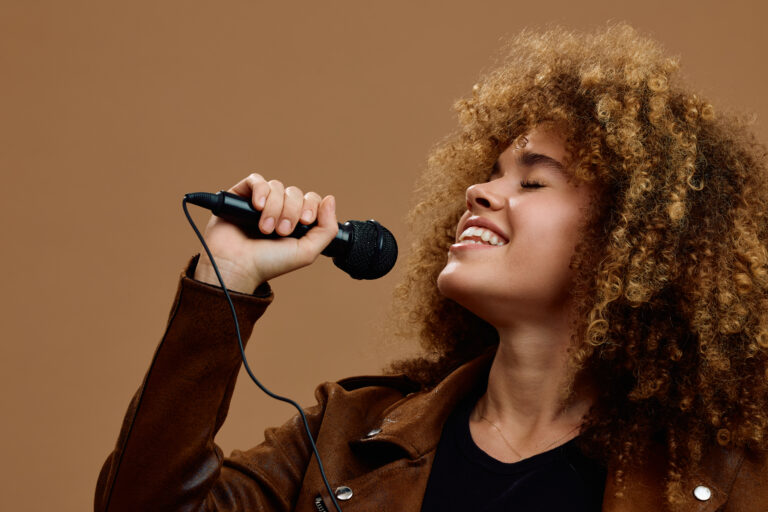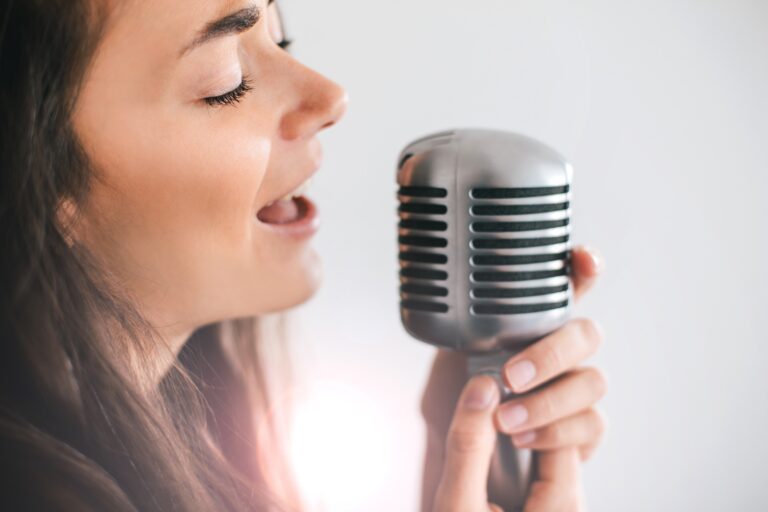
How to Sing High Notes Without Straining
How to Sing High Notes Without Straining
Singing high notes is one of the most exciting — and challenging — parts of vocal performance. Whether you’re belting a pop chorus, gliding through a classical arpeggio, or attempting whistle tones, hitting those high notes without straining is essential for both your performance and vocal health.
The good news? High notes can be trained, not tortured. With the right approach, you can build vocal strength, flexibility, and control to reach those upper registers effortlessly. In this guide, we’ll break down techniques that singers of all levels can use to hit high notes with confidence — and without hurting their voice.
1. Understand Why Strain Happens on High Notes

Before solving the issue, it helps to know what causes strain.
🔍 Common Reasons for Strain:
- Improper breath support
- Tight throat or jaw muscles
- Trying to “reach up” physically
- Singing from the throat instead of resonators
- Lack of head voice or mixed voice development
Trying to “push” your voice upward actually does more harm than good. High notes require release, not force.
2. Warm Up Properly Before Attempting High Notes
Think of your voice like an athlete’s muscle — would you sprint full speed without stretching?
✅ Best Warm-Ups for High Notes:
- Lip trills and sirens (slide from low to high)
- Humming scales to loosen resonance
- Vocal straw exercises for gentle fold engagement
- 5-tone scales moving gradually upward
- Light “ng” (as in “sing”) sounds to lift the soft palate
Start slow. Keep volume low. Focus on ease and flexibility, not power.
3. Use Breath Support — Not Throat Pressure

One of the biggest keys to singing high notes is diaphragmatic breathing.
🫁 Try This Exercise:
- Place one hand on your belly and the other on your chest
- Inhale deeply — your belly should expand, not your chest
- Exhale on a long “sss” sound
- Do this several times to build breath control and stamina
When you sing high, channel air from your core — not your neck. This minimizes pressure and gives your voice the lift it needs.
4. Master Vocal Placement: Sing Into the Mask
High notes should feel like they’re floating forward, not pressed upward.
🎯 Focus on:
- “Mask” resonance (cheeks, nose, forehead)
- Singing as if the sound is buzzing above the front teeth
- Avoiding tension in your neck, shoulders, and tongue
Mental trick: Imagine the sound floating out of your eyebrows, not your throat.
5. Use Head Voice & Mixed Voice

Trying to belt high notes in chest voice alone will almost always cause strain. Learn to switch or blend registers.
🎵 Vocal Registers:
- Chest Voice: Lower notes (talking range)
- Head Voice: Lighter, higher resonance
- Mixed Voice: A blend of both, useful for safe belting
Mixed voice helps you sing strong high notes without yelling.
6. Sing Lighter, Not Louder
Many singers mistakenly believe high notes must be loud. In truth, they must be light, focused, and resonant.
✨ Try This:
- Sing a high note softly and gently
- Aim for clarity and pitch, not power
- Gradually add volume only if it remains tension-free
Practice singing high notes quietly to train coordination without force.
7. Don’t Reach for the Note Physically

Leaning your head back, stretching your neck, or lifting your chin can disrupt airflow and cause tension.
🧍 Try:
- Keeping your head neutral or slightly down
- Relaxing your shoulders
- Staying grounded through your core and feet
Let the pitch rise, but keep your body anchored.
8. Cool Down After Singing
Just like a workout, your voice needs to recover.
🧊 Cooling Down Tips:
- Hum gently on a descending scale
- Do light lip rolls downward
- Sip warm water or herbal tea
- Rest your voice for 15–30 minutes
This prevents fatigue and long-term damage.
9. When to Seek a Vocal Coach

If you’ve been trying for months and still feel strain, it might be time to get help.
👩🏫 A good coach can:
- Identify your vocal type and range
- Help you find your mix voice
- Customize warm-ups for your needs
- Prevent injury and fast-track your progress
About The Mystic Keys – Elevate Your Voice Safely
At The Mystic Keys, we specialize in building strong, confident singers—without hurting the voice. Our one-on-one online Zoom vocal lessons are crafted to match every singer’s range, style, and goals.
🎤 Learn:
- Proper breath control
- High note techniques
- Voice blending (head, chest, mix)
- Song application and pitch correction
- Confidence in performance
Taught by expert Grade 8 and Trinity-certified teachers, our classes include recordings, personalized notes, and flexible schedules. Whether you’re a beginner or an aspiring pro, we help your voice grow safely.
🌐 Explore more: The Mystic Keys
Conclusion: You Can Sing High Notes Without Straining

Singing high notes should feel free, not forced. With the right breath support, vocal placement, and consistent technique, even the most challenging notes can become a natural part of your range.
So take your time, train with care, and remember — it’s not about how high you go, but how beautifully and safely you get there.
Explore Western Vocals Lessons Online designed to help you improve your musical timing with techniques like metronome practice, tapping, and rhythm drills for better accuracy.
For more information and exciting resources about learning music, visit our website at The Mystic Keys. For more music content and exciting offers follow us on
Facebook, Instagram, YouTube, LinkedIn, Twitter, Pinterest, Reddit, Threads,
and Quora.
Related Blogs
Playing a musical instrument is a deeply rewarding pursuit, blending artistry, skill, and discipline into a lifelong journey. Whether you’re just starting out or have years of experience, there’s always room for growth.
Choosing the right instrument is one of the most exciting steps in a beginner’s musical journey. Whether you’re a parent enrolling your child, a teenager chasing a passion, or an adult reigniting an old dream, the first instrument you choose plays a big role in your learning experience.
When starting your musical journey, choosing the right instruments best for beginners is crucial to ensuring an enjoyable and rewarding learning experience. Selecting an instrument that suits your personal preferences, physical abilities, and musical goals can significantly impact how motivated you stay and how quickly you progress.







